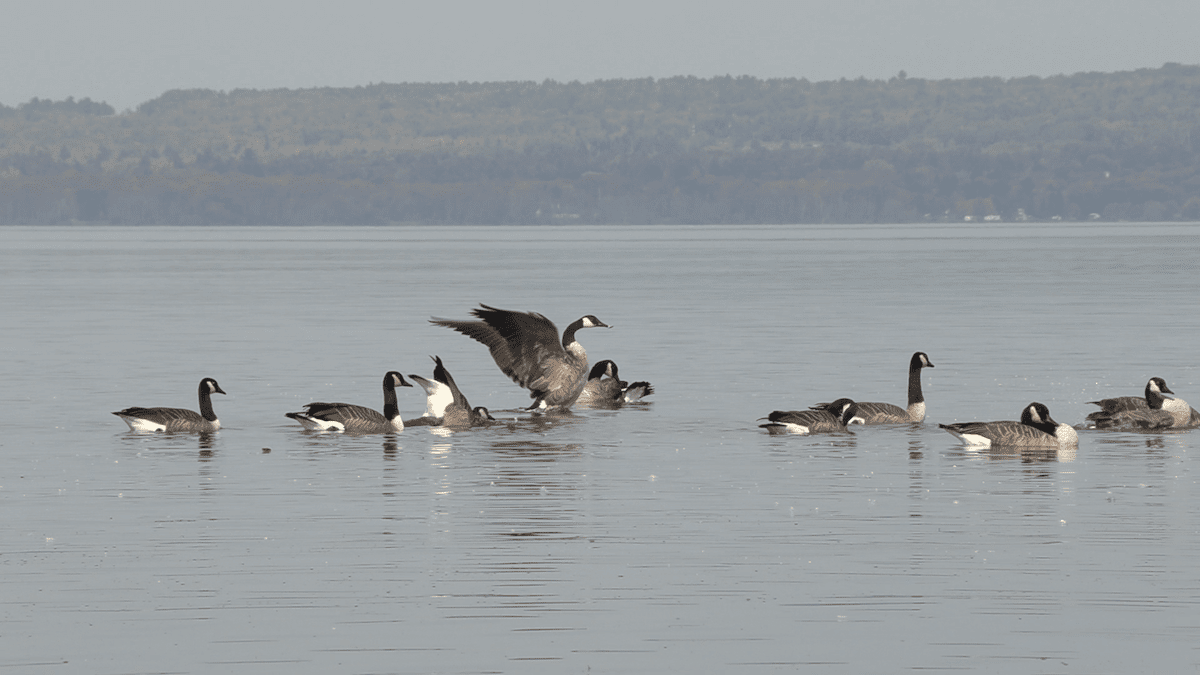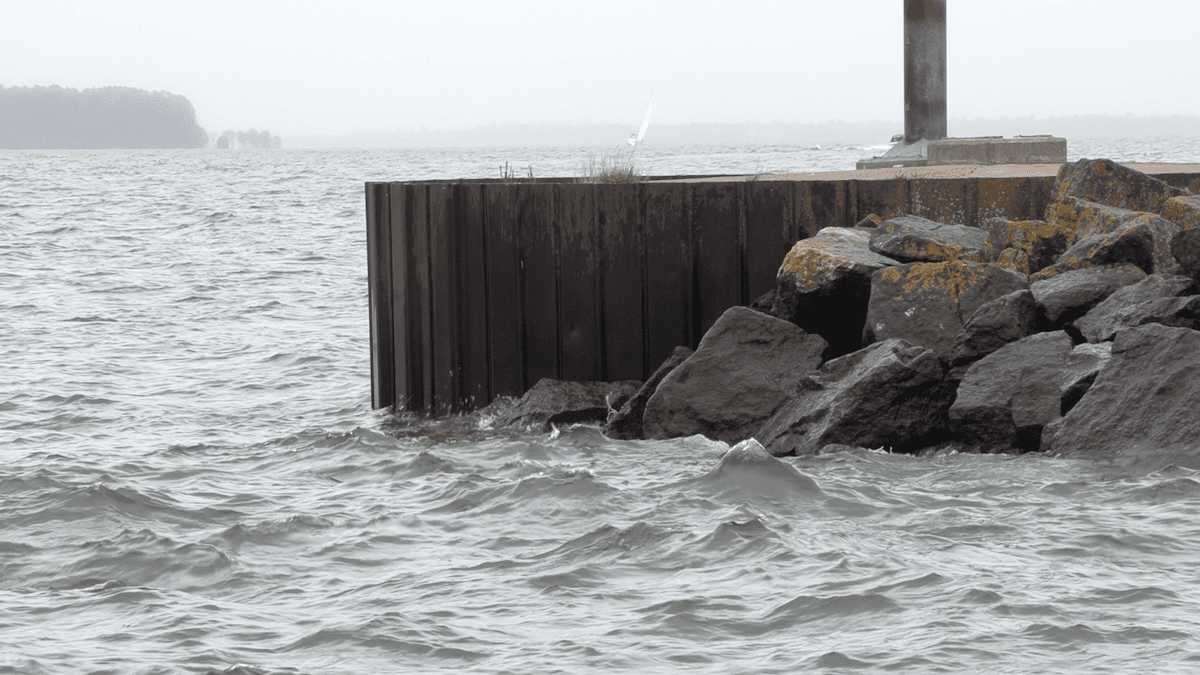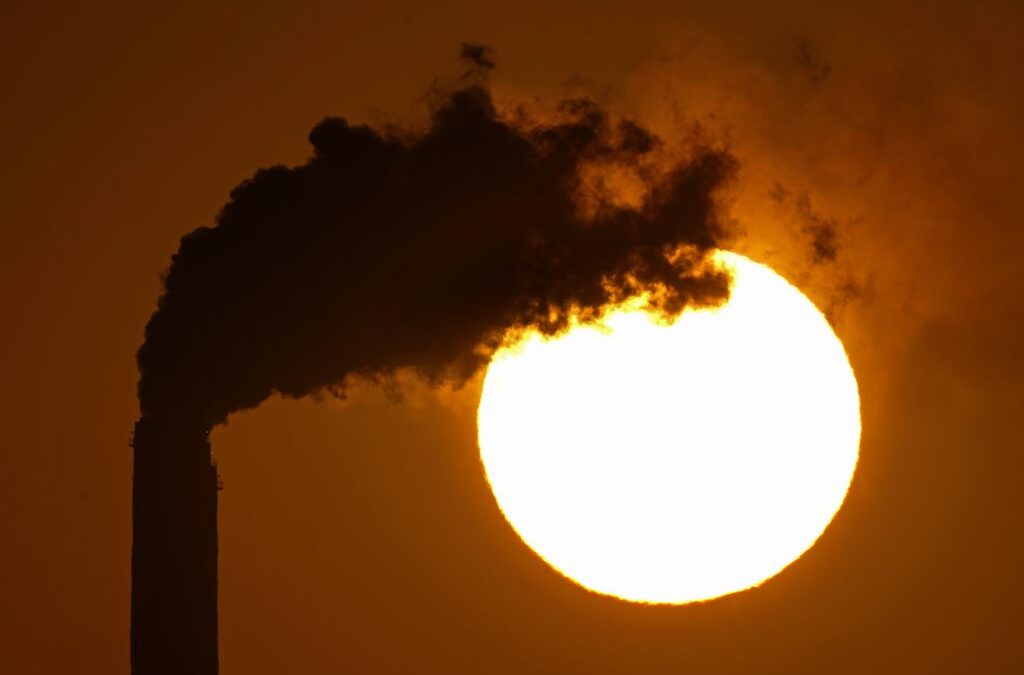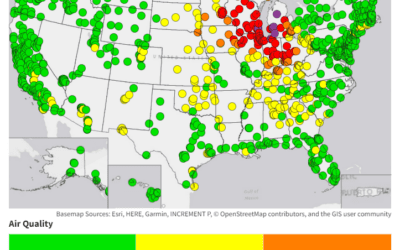
#image_title
The blooms pose the biggest threat to children and pets, and they’re only becoming more common.
Experts fear that climate change’s impacts have extended into Lake Superior by making conditions right for harmful blue-green algae blooms, discoloring the lake and creating potential health hazards.
Blooms, which look like soupy green pond scum, have impacts on both people and the environment through the toxins they release. The toxins can be harmful to people and animals who swim in and drink the water. Of particular concern to experts are children and pets who often don’t know that they should not let the lake water into their mouths.
Individual blooms do not usually last long, perhaps only a couple of hours, but what has researchers on edge is their increasing frequency—a phenomenon credited to the effects of climate change.
“And that’s why they’ve become really concerning in recent years is because we’re seeing more of these blooms in general and also a rise in the number that are toxic,” said Kait Reinl, a researcher at UW-Madison’s Center for Limnology.
The first bloom on Lake Superior was observed in 2012. Over the years, several more have been reported, with the most recent just last month. On Sept. 10, a short-lived bloom was confirmed around Barker’s Island near the city of Superior.
“That is a really different location from the open waters of the lake,” said Gina LaLiberte, the Wisconsin Department of Natural Resources’ algal specialist. “And that bloom really was different. We saw two additional species [of algae] there.”
Responding to algae blooms is not an easy task. Their ephemeral nature leaves the Department of Natural Resources (DNR) only small windows to confirm blooms after they are reported. Because the state lacks the resources to monitor every lake (or even a handful of them), the job of keeping a watchful eye on water quality falls to the public.
The DNR maintains an email address for such reports, but LaLiberte acknowledges that the untrained masses are an imperfect stop gap. In many instances, people do not know how to distinguish blue-green algae from murky water.

Even if the DNR receives an accurate report of a bloom, it may disperse through a change in conditions as subtle as wind direction before a state employee can arrive and confirm the bloom.
Coordination between DNR and the Wisconsin Department of Health Services (DHS)—the two agencies responsible for managing blooms—is complicated by the fact that LaLiberte’s counterpart at DHS is a limited-term position. Any long-range planning is nigh impossible, according to LaLiberte, when she is regularly dealing with a new face at DHS.
Blue-green algae blooms aren’t anything new on lakes in urban areas like Madison’s Lake Monona. However, they are new and concerning for experts who are worried what it might signal about Lake Superior’s future.
“This particular [algae] species seems to be responding to a climate change signal,” LaLiberte said. “Lake Superior is actually the fastest warming of the Great Lakes.”
Reinl, the UW-Madison researcher, laid out the threat to the lake’s future in more stark terms.
“What we think we might be seeing is an ecological shift,” Reinl said. “And so it might be a warning sign of things to come and it is something we need to pay attention to.”
A Recipe for Algae Blooms
Ayooluwateso Coker, a graduate student and researcher at the University of Minnesota-Duluth’s Large Lakes Observatory has been diving into the nutrient levels of Lake Superior.
She likened the conditions needed to foster blooms to a recipe. Similar to baking a loaf of bread, the blooms need the right ingredients to rise. The most limiting of these nutrients is phosphorus.
While Coker is not ready to draw definitive conclusions from her research just yet, she did provide a peek beneath the waves when she hinted that phosphorus may be entering the lake from rivers and streams rather than cities and agricultural sources along the lake shore.
However, she also stressed that the mere presence of phosphorus is not, in and of itself, enough to bring about blooms. Other conditions must be present in the greater climate of the lake.

“I don’t want to scare anybody or anything, but I think it is a high enough concern that people should be aware of it,” Coker said in reference to the blooms.
Perhaps the most lasting damage from the algae could be its effects on the perception of Lake Superior, the world’s largest freshwater reserve and a source of pride in the communities against which its waves lap.
Director of Bayfield County Tourism Mary Motiff said she has not yet noticed any negative impacts on the local economy from the algae blooms. Though she noted that, because the blooms are new and infrequent, they have not yet had the chance to establish themselves in the minds of potential tourists.
Researchers and the DNR said they have not lost sight of the bigger picture.
“It’s also concerning because we want to preserve this resource as a cultural resource and as a spiritual resource and for people to come and visit and for future generations,” Reinl said. “I think that is an important thing to focus on—not just the direct threat to our health, but the bigger picture and the role this lake plays in lots of people’s lives.”

From the top: What is this Inflation Reduction Act that’s so important to the presidential election?
It’s part of President Biden’s legislative agenda—the most productive in generations, yet few Americans know all the details of how it improves...

Here’s how to lower your home’s energy bill under the Inflation Reduction Act
It begins with assessing your home’s current energy use, planning improvements, then getting connected to the credits and rebates that can create...

Biden’s EPA announces rules to slash coal pollution, speed up clean energy projects
The Biden administration last month announced a set of four final rules designed to reduce harmful pollution from power plants fired by fossil...

How to apply for a job in the American Climate Corps
The Biden administration announced its plans to expand its New Deal-style American Climate Corps (ACC) green jobs training program last week. ...




